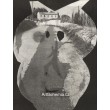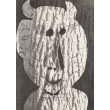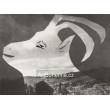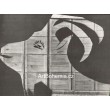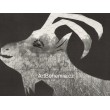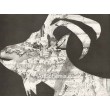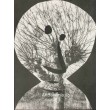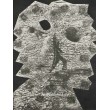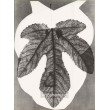Košík
0
x
Produkty
(prázdný)
Žádné díla
Bude determinováno
Dopravné a balné
0 Kč
Celkem
Produkt byl úspěšně přidán do nákupního košíku
Počet
Celkem
0 ks zboží.
1 dílo v košíku.
Za díla:
Doručení a balné:
Bude determinováno
Celkem
Kategorie
- grafiky/tisky
- obrazy
- kresby
- plakáty
- fotografie
- exlibris
- bibliofilie
- knihy/katalogy
- starožitnosti
- sochy/plastiky
- sklo
-
Hnutí
- abstrakce
- art-deco
- čs.avantgarda/moderna
- expresionismus
- fauvismus
- impresionismus
- kubismus
- naivní umění
- op-art
- poetismus
- pop-art
- realismus
- secese
- sociální kritika
- soudobá tvorba
- surrealismus
- světová avantgarda/moderna
- Škola prof. Albína Brunovského
- Škola prof. Zdeňka Sklenáře
- Škola prof.Julia Mařáka - mařákovci
- Žánr
- Zprávy/NEWS
- Doporučujeme
Nová díla
-

Světlo na profil v dlani (Prosby)
1 452 Kč -

Světlo na klečícího (Prosby)
1 452 Kč -

Ryba z akvária (Prosby)
968 Kč
-

Danseurs et musicien, opus 939 (1959)
13 068 Kč -40% 21 780 Kč
Hnutí
- abstrakce
- art-deco
- čs.avantgarda/moderna
- expresionismus
- fauvismus
- impresionismus
- kubismus
- naivní umění
- op-art
- poetismus
- pop-art
- realismus
- secese
- sociální kritika
- soudobá tvorba
- surrealismus
- světová avantgarda/moderna
- Škola prof. Albína Brunovského
- Škola prof. Zdeňka Sklenáře
- Škola prof.Julia Mařáka - mařákovci
Žánr
NEJŽÁDANĚJŠÍ UMĚLCI
- Anderle Jiří
- Augustovič Peter
- Benca Igor
- Beneš Karel
- Bím Tomáš
- Born Adolf
- Brun Robert
- Brunovský Albín
- Boštík Václav
- Bouda Cyril
- Bouda Jiří
- Braque Georges
- Brázda Jiří
- Buffet Bernard
- Cézanne Paul
- Čapek Josef
- Čápová Hana
- Dalí Salvador
- Demel Karel
- Dudek Josef
- Dufy Raoul
- Effel Jean
- Felix Karol
- Filla Emil
- Giacometti Alberto
- Grosz George
- Chagall Marc
- Istler Josef
- Janeček Ota
- Jiřincová Ludmila
- Kandinsky Wassily
- Kĺúčik Peter
- Komárek Vladimír
- Kulhánek Oldřich
- Kupka František
- Lada Josef
- Lhoták Kamil
- Matisse Henri
- Miró Joan
- Mucha Alfons
- Muzika František
- Picasso Pablo
- Pileček Jindřich
- Reynek Bohuslav
- Sukdolák Pavel
- Suchánek Vladimír
- Svolinský Karel
- Šíma Josef
- Špála Václav
- Švabinský Max
- Švengsbír Jiří
- Tichý František
- Toulouse-Lautrec Henri de
- Toyen
- Trnka Jiří
- Váchal Josef
- Vik Karel
- Warhol Andy
- Zábranský Vlastimil
- Zoubek Olbram
- Zrzavý Jan
Seznam děl umělce Picasso & André Villers
ANDRE VILLERS has photographed some of the greatest artists of the 20th century. The painters Dali and Chagall and writers including Jacques Prevert have been all immortalised by his lens.
But it is the intimate photographs of his favourite subject, P
ANDRE VILLERS has photographed some of the greatest artists of the 20th century. The painters Dali and Chagall and writers including Jacques Prevert have been all immortalised by his lens.
But it is the intimate photographs of his favourite subject, Pablo Picasso, which are always in demand.
"People always ask me for the pictures of Picasso," he says. "Picasso was marvellous. You'll think I'm saying this because I was close to him, but he was extraordinary." Some of Villers' favourite images of Picasso are currently on display at the Royal Academy in London, accompanying the exhibition Picasso: Painter and Sculptor in Clay. Normally housed in a museum in Mougins in the south of France, visitors are afforded an insight into Picasso's domestic life as well as his work. One can see the artist attending his beloved bull- fighting at Frejus and at home, cutting paper figures for his two young children, Paloma, today a successful international designer, and Claude, who now controls his father's estate, by his artist lover Francoise Gilot. But the 25 prints in London have been chosen to illustrate the main exhibition. They were all taken between 1953 and 1959 when Picasso had plunged himself into working in clay for the first time. In the small town of Vallauris near Cannes, he took ordinary vases and plates produced by the Madoura pottery and transformed thousands of them, twisting some into birds and zoomorphic shapes and painting others. In the pictures, Villers shows Picasso standing in front of shelves of ceramics, many of which look identical to the exhibits at the RA. There are images of him at work in the attic room at Madoura while others show Suzanne Ramie, who ran Madoura with her husband Georges, visiting Picasso at La Californie, the home he shared with Francoise, in Cannes. Yet when the two men met, Villers had no idea who Picasso was. Villers, now 68 years old, was invalided to a sanatorium in Vallauris when the deprivations of the Second World War left him with a severe calcium deficiency. It affected his bones so badly that he spent five years flat on his back. As he began to learn how to walk and live again, he started photography lessons, and gradually expanded his subject matter from the sick to the surrounding countryside. "One day when I was out, by chance I met Picasso," he recalls. "I didn't know anything about his paintings. I still don't know what attracted me to speak to him." Villers raised his camera seeking permission to take a shot of the artist - and Picasso refused. After some pleading, he eventually agreed to just one frame. Afterwards, Picasso asked to see the box of pictures Villers was carrying under his arm "just in case someone asked to see them". After Picasso had spent some time perusing the novice photographer's work he said: "Having seen what you do, do you want to see what I do?" He went on to add: "Don't worry. People take me for a mad man, but all I want to do is tell the truth." After this initial meeting the two quickly became good friends. Picasso took Villers to his studio, showed him his paintings and sculptures and, in so doing, invited him into his life. This friendship even led to a collaboration on Diurnes, a book of photographs to accompany a text by Prevert. Unsurprisingly, Villers is a committed Picasso fan. The stories of the artist's unpleasantness to those close to him - particularly the women in his life - are legion. He adored playing the tyrant. Yet Villers will not permit criticism: "All these things about him being a cruel sadist are not true." He concedes that Picasso was more than aware of his greatness, and thus could be arrogant. At La Californie, the family goat would wander through the house eating Picasso's drawings that lay scattered on the floor. Ever mindful of his own worth, when the goat then returned the work as excrement, Villers remembers the painter pointing and saying: "Americans should buy this." But he could also be kind. When Villers' first Rolliflex camera stopped working, Picasso bought him another and gave it to him with the words: "How can you live without one? It's your eyes." Andre Villers speaks fondly of the days when Picasso, though famous, could still walk unhindered in the streets of Vallauris before his reputation made it impossible for him to do so. And the photographer has every reason to be grateful for their chance encounter. For Picasso, though characteristically arrogant, was right when he joked to Villers: "C'est moi qui t'ai mis au monde" - "I made you." In: http://www.findarticles.com/p/articles/mi_qn4158/is_19981124/ai_n14198366 * * * * * André Villers must be the funniest man I know and yet I've never heard him laugh.
He just smiles when sharing his hidden Mediterranean garden where he redesigns the world into which he was born. Secret Garden is an attempt to translate some of the humor that I discovered in André's world into newborn laughter for anyone seeking relief from the steadily rising flood of tragic images of disaster victims which seem about to engulf our troubled Earth.
Villers taught himself everything he treasures most in life: photography, painting, a passion for poetry — and how to walk once again after five claustrophobic years spent in plastercasts when many doctors dismissed him as a hopeless invalid. He had earlier been stricken with a spinal deformity caused by wartime childhood malnutrition during enemy occupation of his hometown in eastern France. After the Allied victory his life was restricted to a hospital bed, totally immobile, in sunny Vallauris on the Côte d’Azur. He was later loaned an ancient camera as part of the therapy to make him walk again. André’s fate had been reborn.
A master photographer today, his portraits of painters and poets have been published and increasingly honored for thirty years. We have been friends even longer. For the last seven years, while still taking portraits of the most celebrated and obscure artists, Villers has isolated himself in a one-room shack next to the darkroom in his garden. Soundless eruptions of his imagination are now threatening to bury him there. Every day hilarious, mysterious and hauntingly gentle characters of sculpted cardboard appear at his side. Also numerous self-portraits, not one self-pitying.
Hundreds upon hundreds are stacked in that almost exploding hideaway. Each is different. All have been fired by that elusive spark which brings life to inanimate material: a new folk art of our time. For each is embellished with a shining symbol of our hi-tech mini-religion, the now worldwide cult-of-the-camera.
Working with only a razor-knife and discarded boxes brought home by his wife from the nearby supermarket, an office stapling machine and his seemingly never exhausted imagination, Villers is creating the entire population of a mythical race — a children's world of giants and gnomes for everyone.
These photographs of Villers’ work have been reproduced straight from "One Hour" color prints made by a hole-in-the-wall photography shop at the village supermarket near DDD's home in southern France.
Everything in Secret Garden was shot on an amateur's negative color film. It was a surprise. When in deep shade, Duncan found that he could achieve both color saturation and a sense of Villers' artistic passion that startled him and other professional friends, including some of the finest color printers in the world who saw first layouts of these pages at last year's Frankfurt International Book Fair.
This is Duncan's nineteenth book and it fulfills one of his greatest ambitions: to be his own publisher. By assuming that final role in book creativity he hopes to make it affordable to students, young artists and photographers and other dreamers, who will feel at home in Villers' garden. In: http://www.hrc.utexas.edu/exhibitions/online/ddd/publications/asecretgarden.html * * * * * Exposition André Villers
-
Discours de Monsieur l’Ambassadeur prononcé (pour la plus grande partie en langue néerlandaise) à l’occasion de l’ouverture de l’exposition André Villers au Museum Jan van der Togt, Amstelveen, dimanche 11 mars 2007
Monsieur le Maire d’Amsterdam, Monsieur le Directeur, Mesdames et Messieurs,
Le philosophe français Jean Baudrillard, qui vient de disparaître, écrivait que “Photographier n’est pas prendre le monde pour objet, mais le faire devenir objet, exhumer son altérité enfouie sous sa prétendue réalité, le faire surgir comme attracteur étrange et fixer cette attraction étrange dans une image.”
Il me semble que votre démarche photographique d’André Villers porte en elle ce souci de révéler la véritable identité des êtres et des choses. On peut croire également que la volonté de saisir par la photographie « l’attraction étrange » dont parle Baudrillard a conféré à ses œuvres cette dimension proprement magique dont le Museum Jan van der Togt rend fidèlement compte avec cette exposition. Le public ne manquera pas de constater que de véritables icônes sont passées devant l’objectif d’André Villers, qu’elles fussent artistes, poètes, écrivains, ou architectes. Toutes des personnalités qui, par leur force intellectuelle et la richesse de leur imaginaire, ont profondément marqué l’histoire des hommes.
En nu ga ik over op het Nederlands.
Maar wat wij vooral dankzij deze expositie kunnen ontdekken, is de intensiteit van de momenten die de heer Villers in zijn beelden heeft vastgelegd en zijn gevoeligheid ten opzichte van de mensen die hij fotografeert. Zijn portretten - en met name die van Picasso- reizen sinds de jaren vijftig de wereld rond omdat deze een unieke fotografische blik combineren met een zekere poëzie. Tijdens de samenwerking met zijn modellen is een vorm van grote compliciteit ontstaan en dat is te bemerken, evenals het feit dat hij ze steeds zo juist mogelijk probeert uit te beelden. Het is deze nuance, overrompeling en dichterlijke schoonheid die zijn werken deze aanzienlijke kwaliteit geven.
Ik geloof ook dat velen het gevoel hebben dat voor André Villers kunst voortvloeit uit een constante dialoog tussen realiteit en fictie, tussen uiterlijke schijn en identiteit, maar eveneens tussen mensen. Zijn artistieke leven is op een emblematische manier doorspekt met talrijke samenwerkingsprojecten met andere dichters en kunstenaars, zoals “Diurnes”, een meesterlijk project met een tekst van Jacques Prévert, of “Pliages d’ombres” met Michel Butor en, recentelijk, het project bedacht met Ben voor het twintigjarig bestaan van het Museum van de Fotografie in Mougins. Een museum waaraan men zijn naam heeft gegeven.
Wij herinneren ons ook het fantastische werk met de sculpturen van Sosno. André Villers heeft met zijn camera gedurende heel 2002 deze kunstenaar gevolgd tijdens zijn werk. Want experimenten van andere kunstuitingen sluiten aan bij het zoeken naar nieuwe vormen van expressie in de fotografie. Collages, fotogrammen, fotomontages en de superpositie van beelden zijn erg belangrijk in zijn kunstcreaties. Deze introduceren in zijn werken als het ware een afspiegeling van de kracht van twee kunstenaars door wie hij zich aan het begin van zijn artistieke carrière heeft laten leiden: Picasso en Prévert. Een poëtische en surreële perceptie en creatie van de wereld.
Je suis convaincu que cette exposition connaîtra tout le succès qu’elle mérite et contribuera opportunément à faire mieux connaître l’oeuvre d’André Villers aux Pays-Bas.
Ik dank u voor uw aandacht.» In: http://www.ambafrance.nl/article.php?id_article=8310
Zobrazit
But it is the intimate photographs of his favourite subject, Pablo Picasso, which are always in demand.
"People always ask me for the pictures of Picasso," he says. "Picasso was marvellous. You'll think I'm saying this because I was close to him, but he was extraordinary." Some of Villers' favourite images of Picasso are currently on display at the Royal Academy in London, accompanying the exhibition Picasso: Painter and Sculptor in Clay. Normally housed in a museum in Mougins in the south of France, visitors are afforded an insight into Picasso's domestic life as well as his work. One can see the artist attending his beloved bull- fighting at Frejus and at home, cutting paper figures for his two young children, Paloma, today a successful international designer, and Claude, who now controls his father's estate, by his artist lover Francoise Gilot. But the 25 prints in London have been chosen to illustrate the main exhibition. They were all taken between 1953 and 1959 when Picasso had plunged himself into working in clay for the first time. In the small town of Vallauris near Cannes, he took ordinary vases and plates produced by the Madoura pottery and transformed thousands of them, twisting some into birds and zoomorphic shapes and painting others. In the pictures, Villers shows Picasso standing in front of shelves of ceramics, many of which look identical to the exhibits at the RA. There are images of him at work in the attic room at Madoura while others show Suzanne Ramie, who ran Madoura with her husband Georges, visiting Picasso at La Californie, the home he shared with Francoise, in Cannes. Yet when the two men met, Villers had no idea who Picasso was. Villers, now 68 years old, was invalided to a sanatorium in Vallauris when the deprivations of the Second World War left him with a severe calcium deficiency. It affected his bones so badly that he spent five years flat on his back. As he began to learn how to walk and live again, he started photography lessons, and gradually expanded his subject matter from the sick to the surrounding countryside. "One day when I was out, by chance I met Picasso," he recalls. "I didn't know anything about his paintings. I still don't know what attracted me to speak to him." Villers raised his camera seeking permission to take a shot of the artist - and Picasso refused. After some pleading, he eventually agreed to just one frame. Afterwards, Picasso asked to see the box of pictures Villers was carrying under his arm "just in case someone asked to see them". After Picasso had spent some time perusing the novice photographer's work he said: "Having seen what you do, do you want to see what I do?" He went on to add: "Don't worry. People take me for a mad man, but all I want to do is tell the truth." After this initial meeting the two quickly became good friends. Picasso took Villers to his studio, showed him his paintings and sculptures and, in so doing, invited him into his life. This friendship even led to a collaboration on Diurnes, a book of photographs to accompany a text by Prevert. Unsurprisingly, Villers is a committed Picasso fan. The stories of the artist's unpleasantness to those close to him - particularly the women in his life - are legion. He adored playing the tyrant. Yet Villers will not permit criticism: "All these things about him being a cruel sadist are not true." He concedes that Picasso was more than aware of his greatness, and thus could be arrogant. At La Californie, the family goat would wander through the house eating Picasso's drawings that lay scattered on the floor. Ever mindful of his own worth, when the goat then returned the work as excrement, Villers remembers the painter pointing and saying: "Americans should buy this." But he could also be kind. When Villers' first Rolliflex camera stopped working, Picasso bought him another and gave it to him with the words: "How can you live without one? It's your eyes." Andre Villers speaks fondly of the days when Picasso, though famous, could still walk unhindered in the streets of Vallauris before his reputation made it impossible for him to do so. And the photographer has every reason to be grateful for their chance encounter. For Picasso, though characteristically arrogant, was right when he joked to Villers: "C'est moi qui t'ai mis au monde" - "I made you." In: http://www.findarticles.com/p/articles/mi_qn4158/is_19981124/ai_n14198366 * * * * * André Villers must be the funniest man I know and yet I've never heard him laugh.
He just smiles when sharing his hidden Mediterranean garden where he redesigns the world into which he was born. Secret Garden is an attempt to translate some of the humor that I discovered in André's world into newborn laughter for anyone seeking relief from the steadily rising flood of tragic images of disaster victims which seem about to engulf our troubled Earth.
Villers taught himself everything he treasures most in life: photography, painting, a passion for poetry — and how to walk once again after five claustrophobic years spent in plastercasts when many doctors dismissed him as a hopeless invalid. He had earlier been stricken with a spinal deformity caused by wartime childhood malnutrition during enemy occupation of his hometown in eastern France. After the Allied victory his life was restricted to a hospital bed, totally immobile, in sunny Vallauris on the Côte d’Azur. He was later loaned an ancient camera as part of the therapy to make him walk again. André’s fate had been reborn.
A master photographer today, his portraits of painters and poets have been published and increasingly honored for thirty years. We have been friends even longer. For the last seven years, while still taking portraits of the most celebrated and obscure artists, Villers has isolated himself in a one-room shack next to the darkroom in his garden. Soundless eruptions of his imagination are now threatening to bury him there. Every day hilarious, mysterious and hauntingly gentle characters of sculpted cardboard appear at his side. Also numerous self-portraits, not one self-pitying.
Hundreds upon hundreds are stacked in that almost exploding hideaway. Each is different. All have been fired by that elusive spark which brings life to inanimate material: a new folk art of our time. For each is embellished with a shining symbol of our hi-tech mini-religion, the now worldwide cult-of-the-camera.
Working with only a razor-knife and discarded boxes brought home by his wife from the nearby supermarket, an office stapling machine and his seemingly never exhausted imagination, Villers is creating the entire population of a mythical race — a children's world of giants and gnomes for everyone.
These photographs of Villers’ work have been reproduced straight from "One Hour" color prints made by a hole-in-the-wall photography shop at the village supermarket near DDD's home in southern France.
Everything in Secret Garden was shot on an amateur's negative color film. It was a surprise. When in deep shade, Duncan found that he could achieve both color saturation and a sense of Villers' artistic passion that startled him and other professional friends, including some of the finest color printers in the world who saw first layouts of these pages at last year's Frankfurt International Book Fair.
This is Duncan's nineteenth book and it fulfills one of his greatest ambitions: to be his own publisher. By assuming that final role in book creativity he hopes to make it affordable to students, young artists and photographers and other dreamers, who will feel at home in Villers' garden. In: http://www.hrc.utexas.edu/exhibitions/online/ddd/publications/asecretgarden.html * * * * * Exposition André Villers
-
Discours de Monsieur l’Ambassadeur prononcé (pour la plus grande partie en langue néerlandaise) à l’occasion de l’ouverture de l’exposition André Villers au Museum Jan van der Togt, Amstelveen, dimanche 11 mars 2007
Monsieur le Maire d’Amsterdam, Monsieur le Directeur, Mesdames et Messieurs,
Le philosophe français Jean Baudrillard, qui vient de disparaître, écrivait que “Photographier n’est pas prendre le monde pour objet, mais le faire devenir objet, exhumer son altérité enfouie sous sa prétendue réalité, le faire surgir comme attracteur étrange et fixer cette attraction étrange dans une image.”
Il me semble que votre démarche photographique d’André Villers porte en elle ce souci de révéler la véritable identité des êtres et des choses. On peut croire également que la volonté de saisir par la photographie « l’attraction étrange » dont parle Baudrillard a conféré à ses œuvres cette dimension proprement magique dont le Museum Jan van der Togt rend fidèlement compte avec cette exposition. Le public ne manquera pas de constater que de véritables icônes sont passées devant l’objectif d’André Villers, qu’elles fussent artistes, poètes, écrivains, ou architectes. Toutes des personnalités qui, par leur force intellectuelle et la richesse de leur imaginaire, ont profondément marqué l’histoire des hommes.
En nu ga ik over op het Nederlands.
Maar wat wij vooral dankzij deze expositie kunnen ontdekken, is de intensiteit van de momenten die de heer Villers in zijn beelden heeft vastgelegd en zijn gevoeligheid ten opzichte van de mensen die hij fotografeert. Zijn portretten - en met name die van Picasso- reizen sinds de jaren vijftig de wereld rond omdat deze een unieke fotografische blik combineren met een zekere poëzie. Tijdens de samenwerking met zijn modellen is een vorm van grote compliciteit ontstaan en dat is te bemerken, evenals het feit dat hij ze steeds zo juist mogelijk probeert uit te beelden. Het is deze nuance, overrompeling en dichterlijke schoonheid die zijn werken deze aanzienlijke kwaliteit geven.
Ik geloof ook dat velen het gevoel hebben dat voor André Villers kunst voortvloeit uit een constante dialoog tussen realiteit en fictie, tussen uiterlijke schijn en identiteit, maar eveneens tussen mensen. Zijn artistieke leven is op een emblematische manier doorspekt met talrijke samenwerkingsprojecten met andere dichters en kunstenaars, zoals “Diurnes”, een meesterlijk project met een tekst van Jacques Prévert, of “Pliages d’ombres” met Michel Butor en, recentelijk, het project bedacht met Ben voor het twintigjarig bestaan van het Museum van de Fotografie in Mougins. Een museum waaraan men zijn naam heeft gegeven.
Wij herinneren ons ook het fantastische werk met de sculpturen van Sosno. André Villers heeft met zijn camera gedurende heel 2002 deze kunstenaar gevolgd tijdens zijn werk. Want experimenten van andere kunstuitingen sluiten aan bij het zoeken naar nieuwe vormen van expressie in de fotografie. Collages, fotogrammen, fotomontages en de superpositie van beelden zijn erg belangrijk in zijn kunstcreaties. Deze introduceren in zijn werken als het ware een afspiegeling van de kracht van twee kunstenaars door wie hij zich aan het begin van zijn artistieke carrière heeft laten leiden: Picasso en Prévert. Een poëtische en surreële perceptie en creatie van de wereld.
Je suis convaincu que cette exposition connaîtra tout le succès qu’elle mérite et contribuera opportunément à faire mieux connaître l’oeuvre d’André Villers aux Pays-Bas.
Ik dank u voor uw aandacht.» In: http://www.ambafrance.nl/article.php?id_article=8310
Fotografie
 |  |
